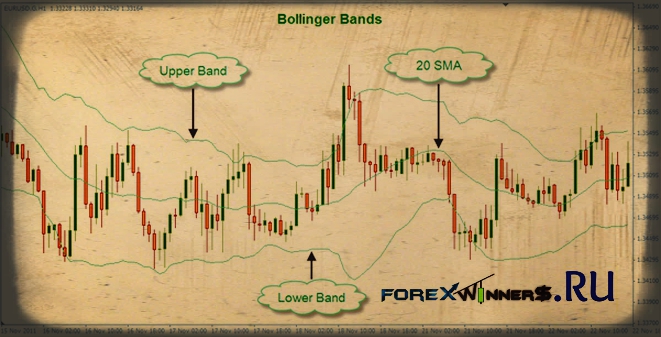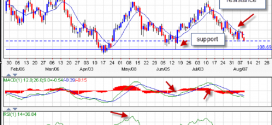The Bollinger Bands is a momentum indicator that gives an excellent visual representation of the market’s volatility. When the market is quiet, the bands are much closer together, but when the market is very volatile, the bands are far apart.
There are three parts of this indicator: a 20 period Simple Moving Average (20 SMA) found in the middle, and two outer bands that are 2 standard deviations above and below the middle band.

Bollinger Bands have 4 basic characteristics:
1. When volatility lessens, the bands tighten and sharp price changes are likely to occur. The quiet market will soon become extremely volatile. This increase in volatility is initiated by a breakout.

2. After the breakout, the price moves outside the bands, it could mean that price may continue moving towards the direction of the breakout.
3. When the price makes bottoms and tops outside the bands then makes bottoms and tops inside the bands, the price is most likely to reverse.
4. When price moves away from one band, the price tends to go all the way to the other band.
In simpler terms, when the price moves along the upper band and crosses out, the market is considered overbought and will eventually decrease in price. A sell trade is imminent.
In the same way, if the price is very close to the lower band and crosses below it, the market is becoming oversold and will soon increase in price. This means a buy trade is imminent.
Also, it is important to note that the Bollinger Bands in higher timeframes, such as the 4 Hour timeframe, are much stronger than those of lower timeframes.
Edited by Mr Alex Michel from UK. 
 Forex Winners | Free Download Downlod free trading sysrems , indicators and forex E-books
Forex Winners | Free Download Downlod free trading sysrems , indicators and forex E-books

